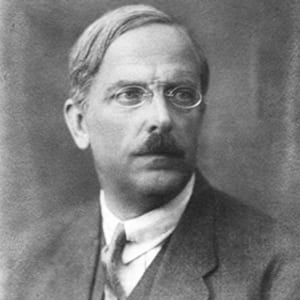
In the United States alone, more than 65 million people suffer from a combination of nasal and food allergies that cause all sorts of discomfort and pain but there is quite a fascinating allergy history and discovery story in the medical community.
It’s no wonder why we there are so many physicians that specialize in allergies and immunology that are trained to diagnose, treat and manage allergy and immunity disorders. But, did you know that the classification and study of allergies is still a relatively new topic in field of science and medicine? In fact, the discovery of allergies and group consensus among scientists for the term associated with it only came about within the last 100 years or so.
If you’re like most of us, you too take the word “allergy” for granted. Especially, since there are so many different uses for the word and hundreds of medications available to treat allergy ailments. To help shed some light on the fascinating origin of the term “allergy” and who discovered allergies in the first place, we put together a detailed history below for you to enjoy.
For those of you who are interested, we also have a list of the top allergy facts, figures and statistics for you to check out as well.
You can also find information on the best air purifier for allergies available. In that free guide, we explain everything you need to know about how to choose an allergy air purifier. Specific technological and filter types are necessary within the device in order to ensure that you get maximum relief for your allergies.
Initial Discovery of the Immune System
During the turn of the 19th and 20th centuries, a brilliant group of scientists described an unknown bodily system that had the primary function of defending the body against attacks by harmful microorganisms.
This group, led by Louis Pasteur, included such notable figures as Paul Erlich, Jules Bordet, Elie Metchnikoff, and Emil A. Von Behring. Their monumental discovery set precedence for what we now know as the immune system.
This fundamental body system was named the “immune” system because it literally exempts itself from disease. All immunities provided by the system protect the body from infection and harm absolutely, especially when working properly. However, when the immune system was first discovered it was not apparent that it could be detrimental to the body if it malfunctions.
Mysterious Reactions Arose from Vaccinations and Antiserum
While industrialization was taking hold in Europe and North America, new medical innovations were paving the way for more double-edged swords on the system. The introduction of vaccinations and antitoxin parenteral treatments created new diseases and inexplicable reactions.
Science, at that point, could not explain it, and few scientists were ready to implicate their new-found marvel, the immune system, as the culprit. In fact, few were able to see any connection.
 Clemens Freiher von Pirquet, a Viennese pediatrician, was one of the very first to come out and state as a slight possibility what has now become obvious.
Clemens Freiher von Pirquet, a Viennese pediatrician, was one of the very first to come out and state as a slight possibility what has now become obvious.
According to his records, von Pirquet came to this conclusion one night while he performed his rounds as the resident pediatrician at KinderKlinic University in Vienna. He had had his suspicions that the immune system played a monumental role in the pathophysiology of infectious diseases, but his research is what sealed the deal. He soon determined the patent lesions of a disease, apart from the obvious role of microorganisms (and their toxins).
It was in April 1903, when von Pirquet and his co-worker Bela Schick, created a preliminary report describing his theory titled “Zur Theorie der Infektionskrankheiten” (Translation: On the Theory of Infectious Disease).
Apparently, this report contained details regarding this revolutionary theory.
Von Pirquet’s Profound Theory
In it, von Pirquet described the cardinal signs of disease, most notably those caused by infections. Furthermore, he went on to report in great detail why infections were not the only result of the actions of microorganisms and their toxins. In short, he discovered that infections are sometimes caused by the body’s response to, or rather against, those microorganisms and their toxins. His idea implied that the human body’s own protective immune system could be the cause of harm to it under the right circumstances.
Von Pirquet and Schick extended their work to include a common systemic complication that often appeared in children just 8 to 12 days after their first dose of antiserum. Over the next two years, this discovery became known as “serum sickness.” Antitoxic sera were introduced to therapeutics in 1891, and systemic complications escalated quickly. These complications were then interpreted as having nonimmune origins. Afterward, von Piquet and Schick came to another conclusion: serum sickness was caused by a hypersensitivity reaction that was provoked by the antibodies being made to fight the antitoxin.
The concept that the body’s own immune system could attack its host came at a time when little was actually known about the immune system and hypersensitivity.
At this point in history, the immune system was considered to be solely protective and nothing more. Such revolutionary concepts were unheard of in von Pirquet and Schick’s time. It became necessary to rethink what science thought it knew about the human body and its many functions.
Von Pirquet and Schick went back to the drawing board and developed another theory which he published just three years later in 1906. In an article titled, “Allergie,” von Pirquet describes several reasons that explain his new terminology about the germinal properties of allergy. He reported that exposing a body to a certain substance could result in the production of antibodies by the immune system – antibodies that induced a transformation in subject-specific reactivity to that substance. He called this, as we still do today, an allergy.
Such a transformation could be protective so that the subject never manifests any symptoms in response to a substance. However, such a transformation can also be harmful and cause signs and symptoms of illness. This has come to be known as hypersensitivity, a common cause of allergies.
In his final work in 1911, von Pirquet wrote a monograph that he devoted to further explaining his groundbreaking theory. He formulated an impressive amount of data on the matter, including his diligent clinical findings which related to the changes in reactivity. Using this information, von Pirquet illustrated how the immune system’s allergic response can change over time. In addition, he clarified his intentions to apply the term “allergy” to only immunological reactions, a distinction not made in its original definition.
Richet Rejects von Pirquet’s New Medical Term “Allergy”
 During the same time period that von Pirquet published his discoveries on the nature of allergy, Charles Richet, a French physiologist, studied the pathological effects of marine toxins in canines. To lessen the experimental expenses, Richet re-administered the same toxin to his dogs after they survived the first injection. As a result, numerous sudden deaths occurred.
During the same time period that von Pirquet published his discoveries on the nature of allergy, Charles Richet, a French physiologist, studied the pathological effects of marine toxins in canines. To lessen the experimental expenses, Richet re-administered the same toxin to his dogs after they survived the first injection. As a result, numerous sudden deaths occurred.
Richet then evaluated the subjects and discovered that the reactions were not unique, but that they followed a very rigid pattern. Richet called the reactions “anaphylaxis,” which basically means “contrary to protection.”
There was a stir in Germany around this time as well. In 1908, bacteriologist, Charles Bolduan, clearly indicated that von Pirquet’s theory was flawed. The pathogenic role of antigens and antibodies in serum sickness was unsound. So, Richet rejected von Pirquet’s term “allergy” and simply regarded it as unnecessary since he had already coined the term anaphylaxis.
In that context, the theory of and term relating to allergy was disregarded, while a newfound interest in anaphylaxis immerged.
Ironically, when Richet received the Nobel Prize for his work on anaphylaxis in 1913, the term “allergy” started gaining the attention of scientists and clinicians. Words and phrases such as “bacterial allergy” and “allergic to tuberculin” became commonplace as the original idea of von Pirquet’s gained support. As the linguistic model of the scientific community began to change, so too did the understanding of the original meaning of the word “allergy.”
This misunderstanding eventually led to the word being used incorrectly for several decades.
Others Continue the Terminology Debate
Numerous attempts were made to summarize the term or classify it in some way. Some of the most common futile attempts include hypersensitivity, idiosyncrasy, hay fever, serum sickness, and contact dermatitis.
It wasn’t until 1923 to 1926 that the first classification was introduced for this type of medical terminology. Two medical professionals, Arthur F. Coca and Robert A. Cooke, published several articles in the field that used the term “hypersensitiveness” instead of “allergy.” Their reasoning for using this alternate term was because they felt that “allergy” was being used too profusely for a variety of contradictory cases. Both Coca and Cooke strongly recommended that the term “allergy” be put to rest and instead, subdivide the term “hypersensitiveness” into two classifications: normal (i.e. contact dermatitis and serum sickness) and abnormal (anaphylaxis and hypersensitiveness of infections).
Unfortunately, Coca and Cooke lost the terminology battle and the word “allergy” was being used more and more by scientists as a substitute for “hypersensitiveness”.
Luckily, their recommendation for a new set of categorizations was not done in vain. The combination of making a distinction between normal and abnormal hypersensitiveness, and the fact that anaphylaxis was only defined in studies done with animals, made headway for the medical community to begin using separate terms for hypersensitivity illnesses found in humans versus animals.
Over time, the word “allergy” became commonplace when referring to hypersensitivities in humans, while “anaphylaxis” was used for the similar ailments found in animals.
Von Pirquet’s Term “Allergy” Becomes Official
By the 1930s, the new word “allergy” that was conceived by von Pirquet was introduced in medical terminology as official, although still misunderstood. The triumph contributed to its appeal, and the success of the new word captivated physicians and the public alike.
Shortly thereafter, common folks were using the word “allergy” to describe any adverse effect they experienced or any reaction they had to anything. Allergy began being used in the public sphere to describe all sorts of antipathy and rejection, followed soon by an appearance in newspapers, books, songs, poetry, etc., expressing all sorts of medical and nonmedical connotations. This has all resulted in the word “allergy” being used as a fashionable word that describes a variety of physical ailments.
Von Pirquet and all of the scientists before and after him have worked hard to define the reactions that occur in the human body, however it’s likely that he, and many others, would show some disdain for the perverted meaning and misuse of the term “allergy” by modern society.
Regardless, the term “allergy” is here to stay and further investigative work is being done by scientists all around the world to further subdivide it into categories that the medical community can use for diagnosing and treating ailments.
If you suffer from allergies that are the result of particles found in the air (i.e. pollen, ragweed, dust, pet dander, mold spores, etc.) and are using medicine to treat it, you may find that an air purifier can help reduce your symptoms and the costs associated with purchasing tablets and/or nasal sprays.
An air purifier is a special device that cleans the air within a room or dedicated space. Its function is to draw air into the system, trap the harmful contaminants that cause allergy symptoms, and pump out clean, fresh air. This recycling of contaminated air enables clean air to be breathed into your lungs and pass by your eyes. Without the allergy inducing particles entering into your body, you feel healthier and have fewer allergy issues.
